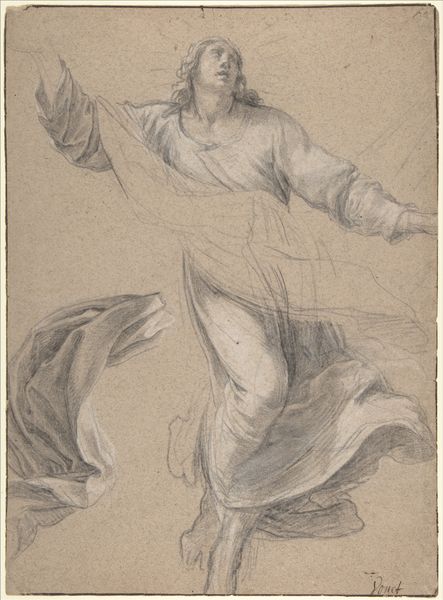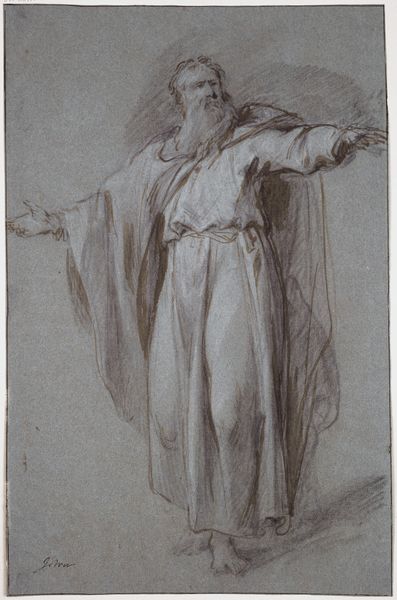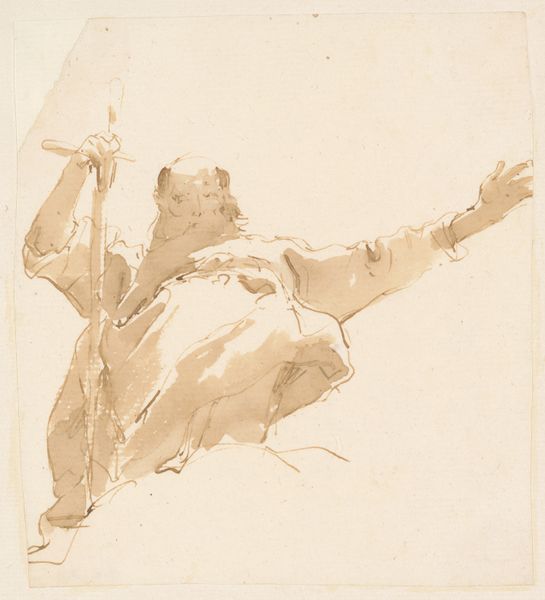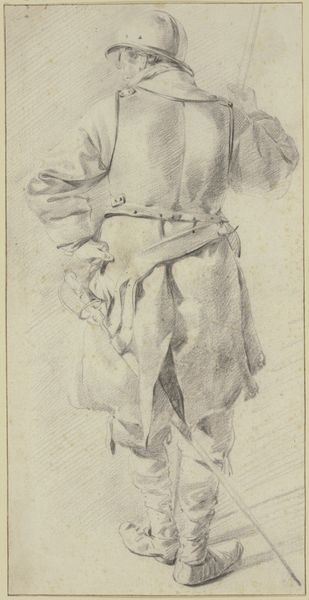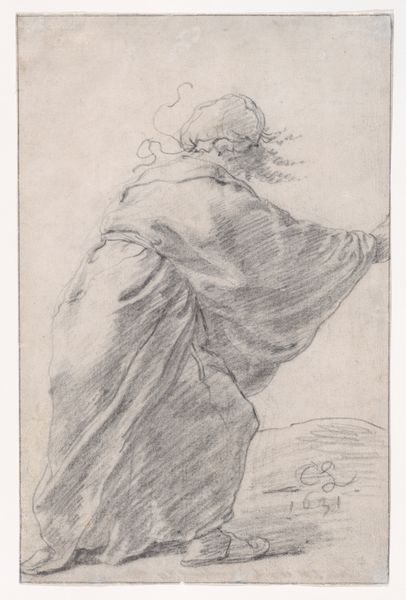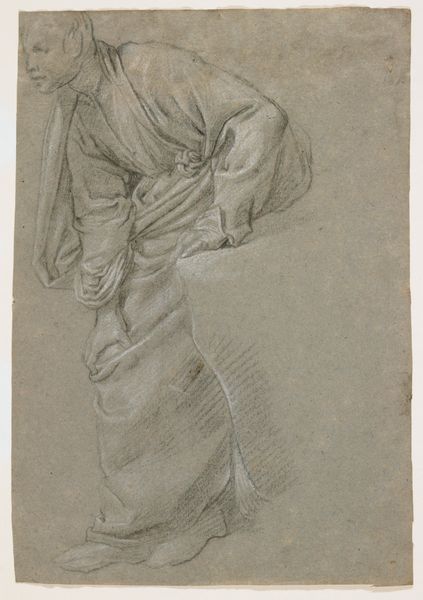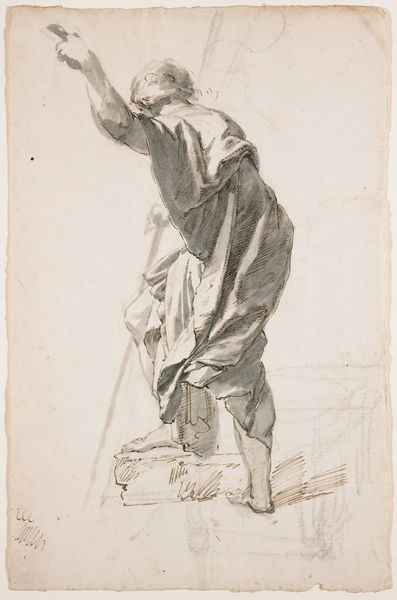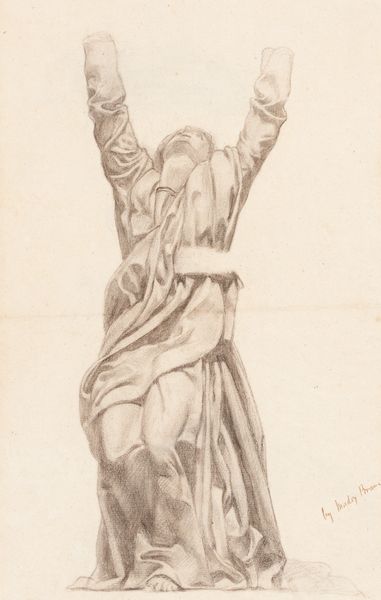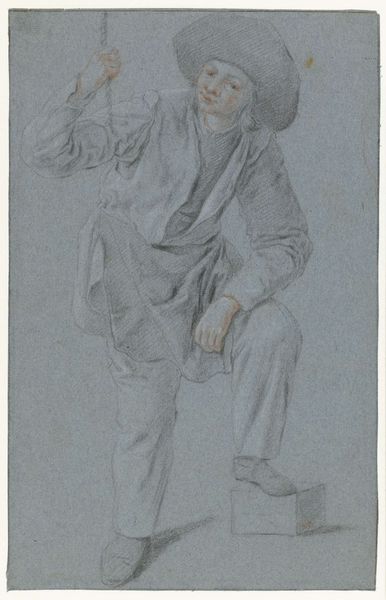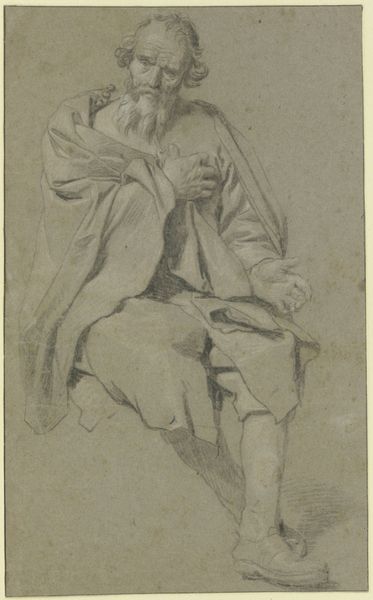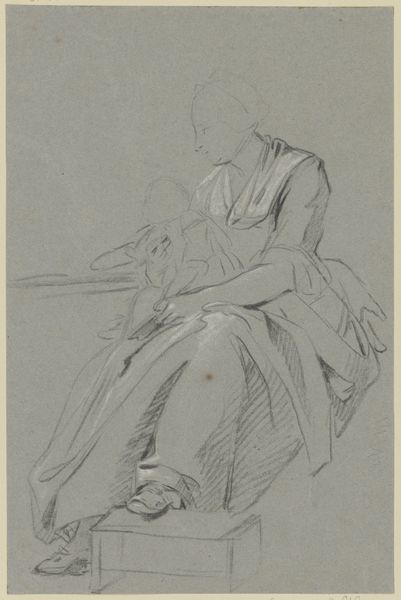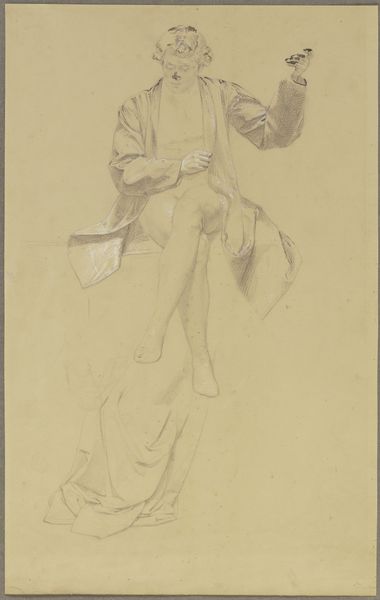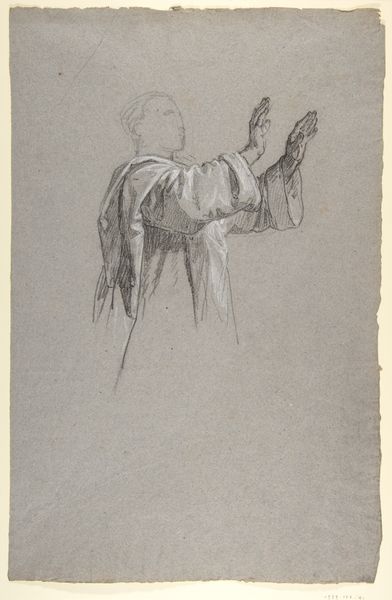
Drapery Study of a Woman with an Outstretched Arm 1765 - 1785
0:00
0:00
Dimensions: Sheet: 17 1/4 x 13 7/8 in. (43.8 x 35.2 cm)
Copyright: Public Domain
Curator: We are now looking at "Drapery Study of a Woman with an Outstretched Arm," a pencil drawing on paper, dating back to somewhere between 1765 and 1785, by Louis Lagrenée, and residing here at the Metropolitan Museum of Art. Editor: First impression? This sketch is surprisingly commanding for something that feels like a study. There’s an energy in that extended arm, like she's either reaching for something incredibly important or dramatically refusing an offer. It's compelling, even without a face. Curator: Indeed. It’s precisely this expressiveness that makes it so captivating. During the Rococo period, academies heavily emphasized preliminary sketches like this, especially studies of drapery. They allowed artists to master the fall and play of fabric, a crucial skill for historical and mythological paintings. Editor: Fabric as its own art form, huh? Looking closely, you can see how much focus Lagrenée dedicated to capturing the weight and texture. The way the light catches those folds is almost sensual. It gives the figure a tangible presence even in its unfinished state. It has a baroque flourish. Curator: Absolutely. Drapery studies were also about conveying emotion and social status. The way fabric flowed and wrapped around a figure could communicate virtue, authority, or even vulnerability, depending on the context of the final painting. Remember, academies promoted a codified language of gesture and form. Editor: So it's like fabric as social semaphore? I like that idea. It also makes me appreciate how much this sketch stands on its own. There's a universality to the gesture, an echo of movement caught in time. It reminds me of seeing dancers preparing, the raw power before the perfected performance. Curator: Precisely! It exemplifies how these seemingly technical studies could transcend their original purpose to become compelling artworks themselves. They offered a glimpse into the artist's process, showcasing skill but also a sense of immediacy that is absent from more formal paintings. Editor: Well, I’m grateful this “practice round” ended up in a museum. It really spotlights the artistry inherent in observation itself. Curator: And its position within the artistic practices of its era helps to ground its significance for modern viewers as well.
Comments
No comments
Be the first to comment and join the conversation on the ultimate creative platform.

